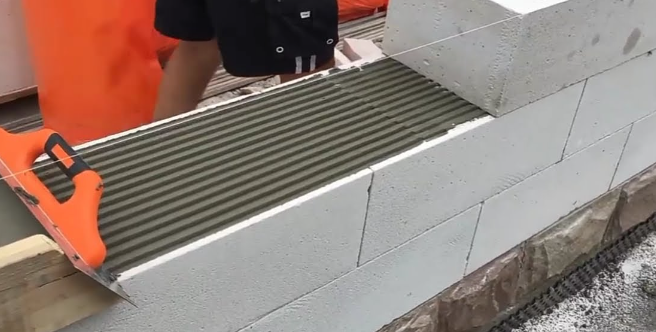Hydroxypropyl Methylcellulose (HPMC) is a versatile cellulose ether widely utilized in the adhesives and sealants industry. Its unique chemical properties, such as water retention, thickening, film-forming ability, and adhesion enhancement, make it an essential component in various adhesive and sealant formulations. This article explores the diverse applications of HPMC in adhesives and sealants, highlighting its benefits and the key factors contributing to its effectiveness.
Applications of HPMC in Adhesives
- Tile Adhesives
- Enhanced Adhesion: HPMC improves the bonding strength between tiles and substrates, ensuring a durable and long-lasting installation.
- Water Retention: It maintains adequate moisture in the adhesive, allowing for proper curing and increased open time for adjustments.
- Workability: HPMC enhances the consistency and spreadability of tile adhesives, making them easier to apply.
- Wall and Floor Coverings
- Stability: HPMC provides stability to adhesives used for wall and floor coverings, preventing sagging and ensuring a uniform application.
- Flexibility: It imparts flexibility to the adhesive, accommodating minor movements and thermal expansions without cracking.
- Paper and Packaging Adhesives
- Fast Setting: HPMC contributes to the fast-setting properties of adhesives used in paper and packaging, ensuring quick and efficient bonding.
- Film Formation: It forms a strong film that enhances the durability and integrity of the adhesive bond.
- Woodworking Adhesives
- Improved Viscosity: HPMC enhances the viscosity and spreadability of woodworking adhesives, ensuring even application and strong bonding.
- Moisture Resistance: It provides moisture resistance, which is crucial for wood products exposed to varying humidity levels.
Applications of HPMC in Sealants
- Construction Sealants
- Crack Resistance: HPMC improves the flexibility and crack resistance of construction sealants, making them suitable for sealing joints and gaps in buildings.
- Durability: It enhances the durability and longevity of sealants, ensuring long-term protection against environmental factors.
- Automotive Sealants
- Heat Resistance: HPMC contributes to the heat resistance of automotive sealants, allowing them to withstand high temperatures and harsh conditions.
- Adhesion: It improves the adhesion properties, ensuring a strong bond between different automotive components.
- Sanitary Sealants
- Waterproofing: HPMC enhances the waterproofing properties of sanitary sealants, making them ideal for use in bathrooms and kitchens.
- Mold Resistance: It provides resistance to mold and mildew growth, ensuring a hygienic environment.
- Glass and Glazing Sealants
- Transparency: HPMC contributes to the clarity and transparency of sealants used in glass and glazing applications, ensuring an aesthetically pleasing finish.
- Weather Resistance: It enhances the weather resistance of sealants, protecting against UV radiation and temperature fluctuations.
Benefits of Using HPMC in Adhesives and Sealants
- Enhanced Performance
- Water Retention: HPMC’s excellent water retention properties ensure proper curing and setting of adhesives and sealants.
- Adhesion Improvement: It improves the bonding strength, ensuring durable and reliable performance.
- Improved Workability
- Consistency: HPMC provides a smooth and consistent texture, making adhesives and sealants easier to apply.
- Sag Resistance: It prevents sagging and slump, ensuring a neat and uniform application.
- Versatility
- Compatibility: HPMC is compatible with various formulations, making it suitable for a wide range of adhesive and sealant applications.
- Customizability: Different grades of HPMC can be tailored to meet specific performance requirements.
Factors to Consider When Using HPMC
- Viscosity
- Selection: Choose the appropriate viscosity grade of HPMC based on the specific application requirements.
- Stability: Ensure the selected HPMC grade maintains stable viscosity over time.
- Substitution Level
- Methoxy and Hydroxypropyl Content: The balance between these functional groups influences the solubility, gelation temperature, and overall performance of HPMC in adhesives and sealants.
- Environmental Conditions
- Temperature and Humidity: Consider the environmental conditions during application, as they can affect the performance of HPMC-based adhesives and sealants.
Conclusion
Hydroxypropyl Methylcellulose (HPMC) plays a crucial role in enhancing the properties and performance of adhesives and sealants. Its benefits, including improved adhesion, water retention, workability, and versatility, make it an indispensable component in various applications. By understanding the specific requirements of each application and selecting the appropriate HPMC grade, manufacturers can achieve high-quality, durable, and effective adhesive and sealant products.


